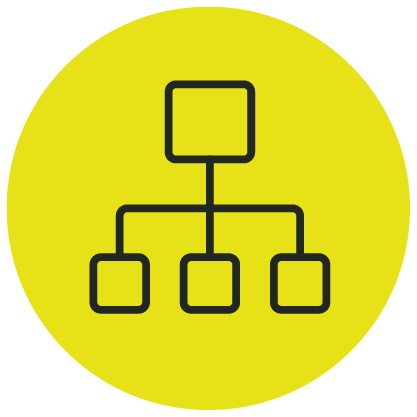CCNC in Action
Teacher buy-in and creating the capacity for them to deliver CCNC content are critical. Schools learned that engaging teachers early, by including them in course design, increased their buy-in and understanding of the course goals. Schools that used a seminar course or advisory period rather than adding CCNC content into an existing academic course found it less challenging for teachers to navigate competing priorities. The schools tested out new solutions to support their teachers:
 Master schedule integration: One school leveraged its student orientation seminar to embed the CCNC course. It was done on a modified timeline, and students were tasked with creating their high school plan using the curriculum, paying particular attention to how WBL and dual enrollment can become a part of their educational journey.
Master schedule integration: One school leveraged its student orientation seminar to embed the CCNC course. It was done on a modified timeline, and students were tasked with creating their high school plan using the curriculum, paying particular attention to how WBL and dual enrollment can become a part of their educational journey.
 Teacher engagement: One school created a small team to design the curriculum with a plan to provide professional development for course instructors throughout the year. The team quickly identified that teachers needed more foundational knowledge to understand the course and its content, later revising their professional development plan to engage teachers in a more impactful way.
Teacher engagement: One school created a small team to design the curriculum with a plan to provide professional development for course instructors throughout the year. The team quickly identified that teachers needed more foundational knowledge to understand the course and its content, later revising their professional development plan to engage teachers in a more impactful way.
 District-wide engagement: One district co-developed the CCNC curriculum with multiple schools to ensure consistency and quality. The district collaborated and shared resources to support teachers, which helped increase buy-in when implementation began.
District-wide engagement: One district co-developed the CCNC curriculum with multiple schools to ensure consistency and quality. The district collaborated and shared resources to support teachers, which helped increase buy-in when implementation began.


 Master schedule integration: One school leveraged its student orientation seminar to embed the CCNC course. It was done on a modified timeline, and students were tasked with creating their high school plan using the curriculum, paying particular attention to how WBL and dual enrollment can become a part of their educational journey.
Master schedule integration: One school leveraged its student orientation seminar to embed the CCNC course. It was done on a modified timeline, and students were tasked with creating their high school plan using the curriculum, paying particular attention to how WBL and dual enrollment can become a part of their educational journey. Teacher engagement: One school created a small team to design the curriculum with a plan to provide professional development for course instructors throughout the year. The team quickly identified that teachers needed more foundational knowledge to understand the course and its content, later revising their professional development plan to engage teachers in a more impactful way.
Teacher engagement: One school created a small team to design the curriculum with a plan to provide professional development for course instructors throughout the year. The team quickly identified that teachers needed more foundational knowledge to understand the course and its content, later revising their professional development plan to engage teachers in a more impactful way.
